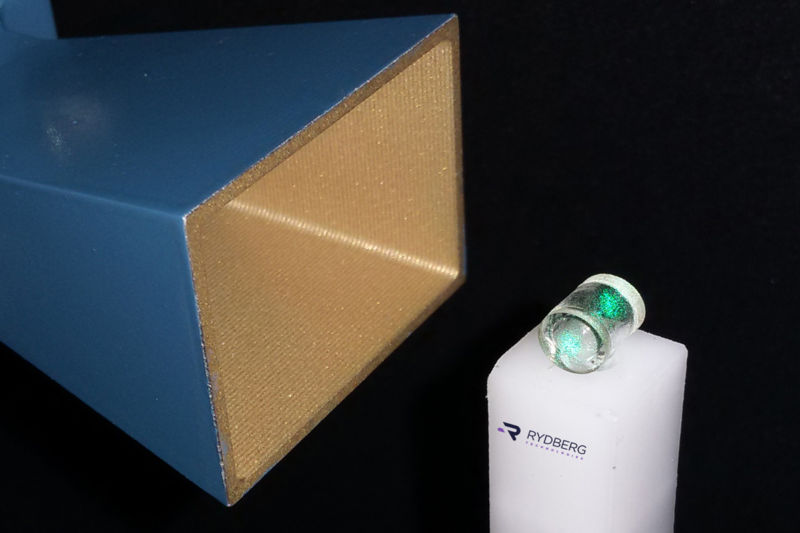
In the 1950s, atomic clocks revolutionized precision time-keeping. Now we may be on the verge of so-called "atomic radio," thanks to the development of a new type of antenna capable of receiving signals across a much wider range of frequencies (more than four octaves) that is highly resistant to electromagnetic interference.
An antenna is typically a collection of metal rods that pick up passing radio waves and convert their energy into an electrical current, which is then amplified. One might argue that the good old-fashioned radio antenna has served us well since the dawn of the 20th century, so why do we need anything to replace it?
According to David Anderson of Rydberg Technologies, those antennae are wavelength-dependent, so their size depends on whatever wavelength of signal they are trying to measure (they need to be about half the size of whatever wavelength they are designed to receive). That means you need antennae of several different sizes to measure different radio frequencies.
Anderson is a co-author of a new paper posted to the arXiv describing a novel alternative to conventional antennae, based on vapor cells filled with a gas of so-called "Rydberg atoms." That just means the atoms are in an especially excited state, well above their ground (lowest-energy) state. This makes them especially sensitive to passing electric fields, like the alternating fields of radio waves. All you need is a means of detecting those interactions to turn them into quantum sensors.
"You can design the receiver to operate at whatever frequencies you want and avoid intentional electromagnetic interference much more easily."
The Rydberg Technologies team realized they could zap their vapor cells filled with excited cesium atoms with laser light tuned to just the right critical frequency. This saturates the atoms so they can't absorb any more light, such that a second laser beam can pass right through them, effectively making the gas transparent. The critical frequency at which this transition happens will change in response to a passing radio wave, so the light from that second laser beam will flicker in response. The vapor cell becomes a purely optical radio wave detector, with no need for any wires or circuitry.
Plus it's capable of measuring pulsed and modulated RF fields, according to Anderson, which is how information is transferred across the airwaves. They have already tested the concept with AM and FM microwaves to transmit recordings of various team members singing "Mary Had a Little Lamb"—a nod to Thomas Edison, who sang the same song when he invented the phonograph in 1877.
The all-optical nature of the vapor cells means that even if they are hit with a massive burst of electromagnetic radiation, like that from a solar flare, they won't be permanently damaged because there is no circuitry to fry. This is a major concern for the electrical grid or certain defense systems and satellites. An atomic antenna would also be less vulnerable to the recent spate of suspected microwave attacks at US embassies in Cuba and China. And the cells are ideal for secure communications. "You can design the receiver to operate at whatever band or whatever frequencies you want and avoid intentional electromagnetic interference much more easily," says Anderson.The detector cells are quite small, merely millimeters in size, with potential to scale them down even more. However, they require a significant backup system to operate, which has not been miniaturized. "You're not going to have a radio receiver that fits into a car dashboard today," says Anderson. "But the atomic clock paved the way for what we now call quantum technologies," and they began as large tabletop devices. Eventually scientists figured out how to make them small enough to fit into commercial systems.
Anderson foresees a similar trajectory for atomic radio. Within the next couple of years, he is confident they will have a suitcase-sized system that would fit neatly into an airplane or a ship, for example—vessels that would welcome the added protection from interference and electromagnetic pulses conferred by these detector cells. And perhaps one day these vapor cells will replace those pesky car antennae with something a bit more aesthetically pleasing.
[h/t: Technology Review]
reader comments
82